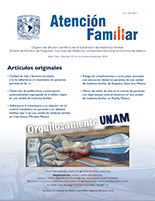Infectious Viral Mumps: Review, Epidemiological Panorama and Challenges
Main Article Content
Abstract
The mumps virus (MuV) is the etiologic agent of benign viral mumps, it is transmitted by respiratory drops, incubates from 12 to 25 days, the symptoms are presented 16 to 18 days after exposure and the main organ affected are the parotids glands in which local and intense inflammation occurs. The most severe complication is orchitis, which is presented in post-pubertal men. Serology is the simplest method for confirming MuV infection and enzyme immunoassay is the most commonly used test. This disease has no specific treatment; specific prevention is the vaccine, which is composed of live attenuated viruses of the Jeryl Lynn strain and has an efficacy of 88%. Since 2012, increases in the number of mumps cases, incidence, number of bouts, and the proportion of cases associated with outbreaks have been reported, so it is described, in broad terms, infectious viral mumps, its situation in the world, in Mexico, and vaccination challenges.
